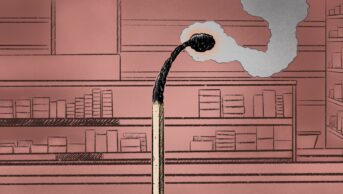Experiencing periods of stress is a normal part of life, but when the stress becomes chronic, it can lead to both mental and physical health problems.
The stress response
Our body’s response to acute stress is protective, providing it switches off when the stressor goes away.
When you experience a stressful event, the amygdala (the part of your brain where emotions are processed) sends a signal to the hypothalamus (the brain’s command centre), which uses the nervous system to tell the rest of your body how to react.
Two systems are activated when we experience stress: the sympathetic-adrenal medullary axis and the hypothalamic pituitary adrenal (HPA) axis.
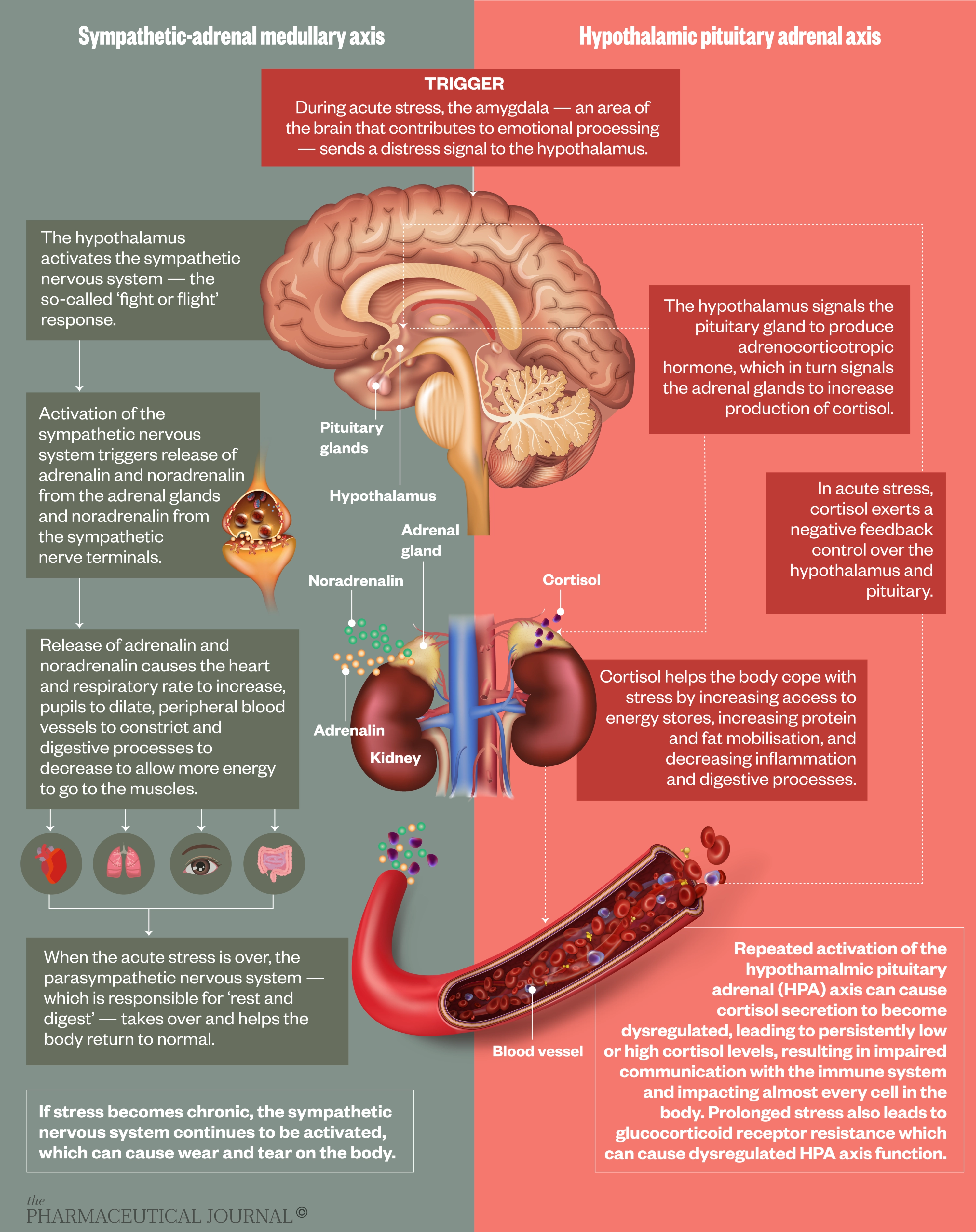
Impact of stress on the body
Although stress originates in our brains and affects our mood and behaviour, its impact is felt all over our bodies.
Chronic stress can influence the severity and progression of multiple diseases, such as depression, cardiovascular disease, HIV/AIDS, asthma and autoimmune disease.
In addition, changes in behaviour as a way of coping with stress, such as increased smoking, decreased exercise and sleep, poor diet and non-adherence to medicines, can influence disease risk.
The extent of the impact of stress on health will depend on numerous factors, including age, genetics, psychosocial resources and coping skills.

Annual Review of Psychology 2021;72(1):663-688
Managing stress
There are some simple things that people can do to manage their stress levels on a day-to-day basis:

The COVID-19 effect
Data from the Office for National Statistics (ONS) show that there was a marked increase in anxiety at the beginning of the first lockdown. Between 20 March 2020 and 30 March 2020, almost half (49.6%) of the adult population reported ‘high anxiety’, bringing average anxiety scores up to 5.2 out of 10, compared with the average score of 3.0 recorded in the last quarter of 2019. Anxiety levels dropped to 3.8 by the end of June 2021 but remain elevated compared with before the pandemic.
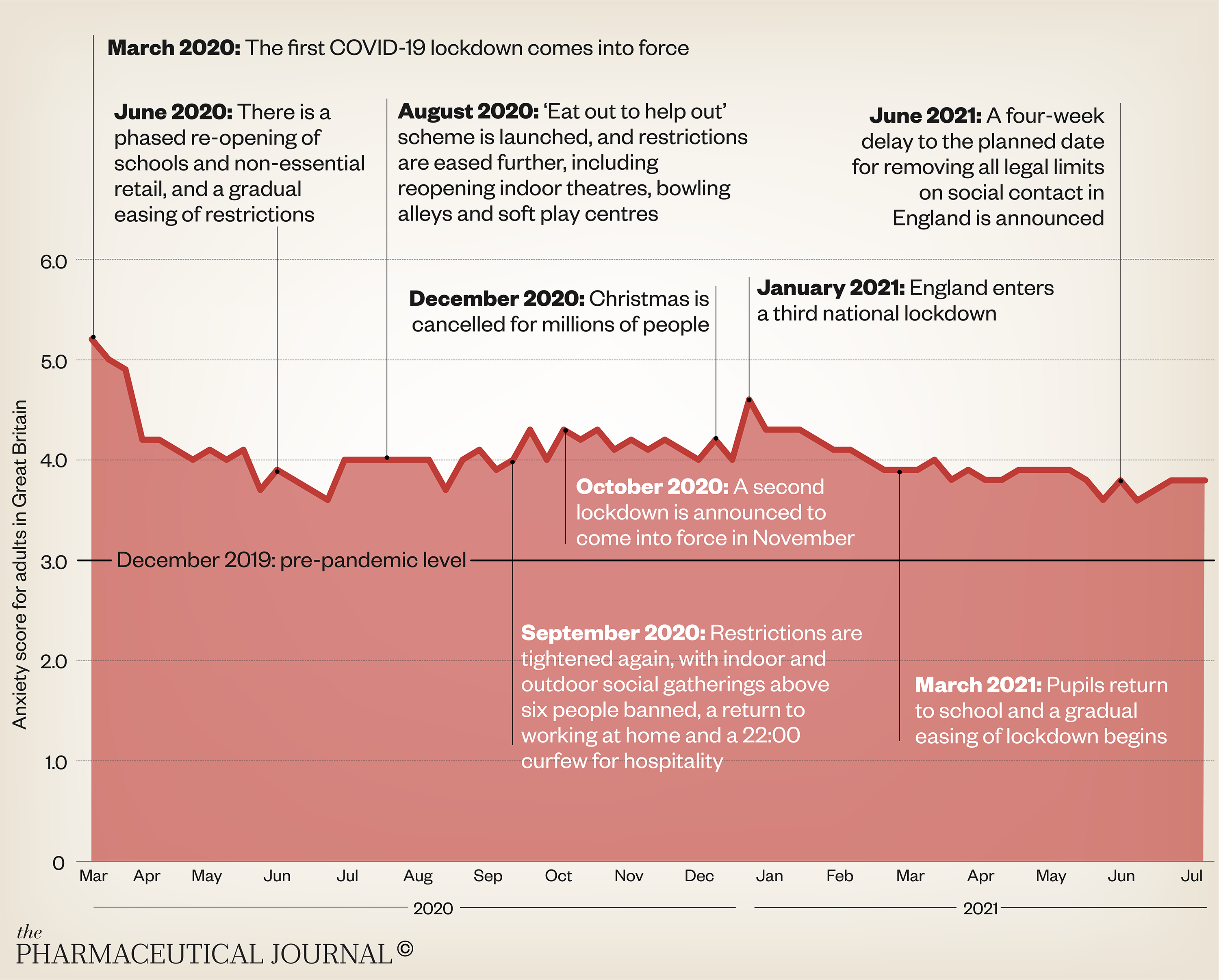
Office for National Statistics, Opinions and Lifestyle Survey
ONS data also show that depression is more prevalent since the pandemic hit, with around one in five (21%) adults experiencing some form of depression in early 2021 — more than double that observed before the pandemic (10%).
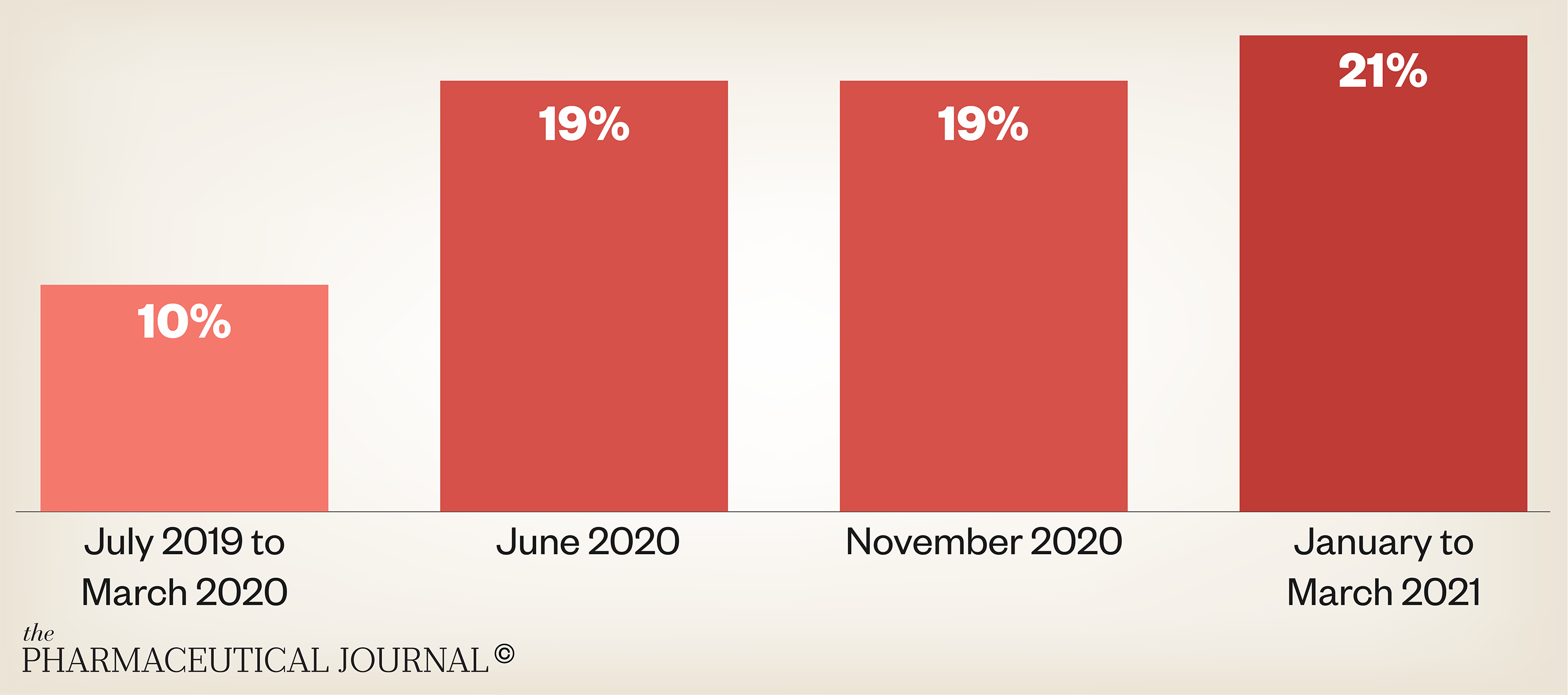
Office for National Statistics, Opinions and Lifestyle Survey
Unsurprisingly, health and social care staff have been hit hard by COVID-19. A survey of 1,194 frontline healthcare workers, including pharmacists, conducted between May and July 2020 revealed that almost 60% reported experiencing mental health problems.
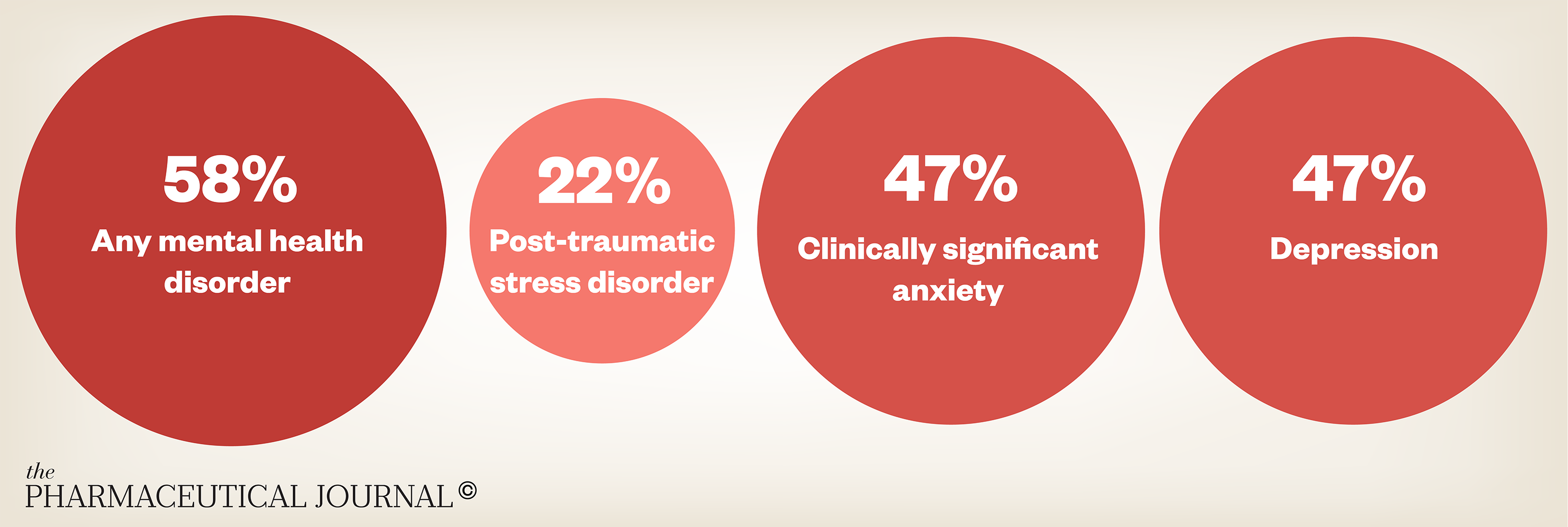
European Journal of Psychotraumatology 2021;12:1
These findings are similar to those uncovered during a survey conducted jointly by the Royal Pharmaceutical Society and Pharmacist Support in autumn 2020, which found that just over half (54%) of respondents said the pandemic had affected their mental health and wellbeing to some extent. A third (31%) said they had been significantly affected.
Editorial adviser: Kavita Vedhara, professor of health psychology, School of Medicine, University of Nottingham


